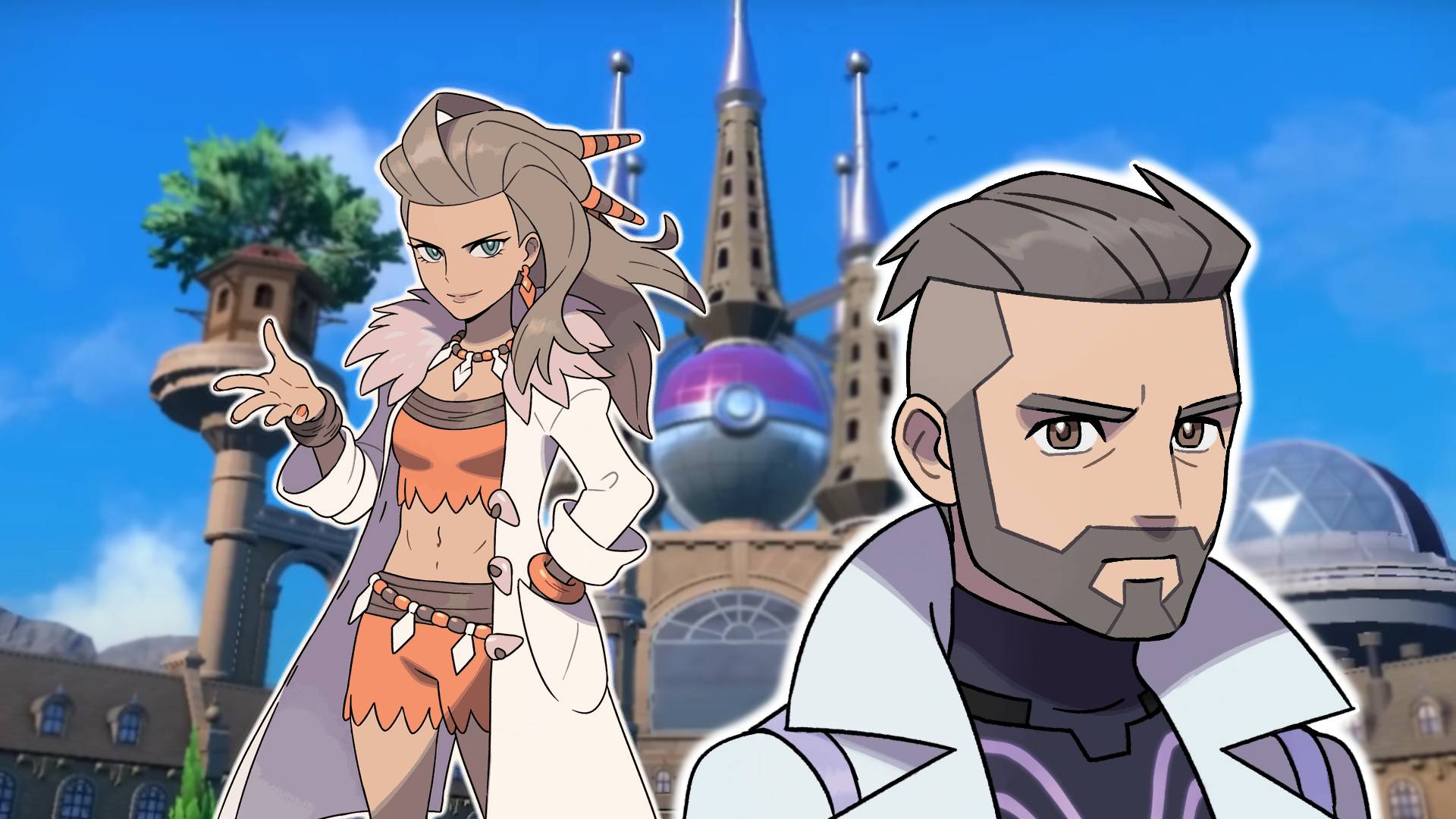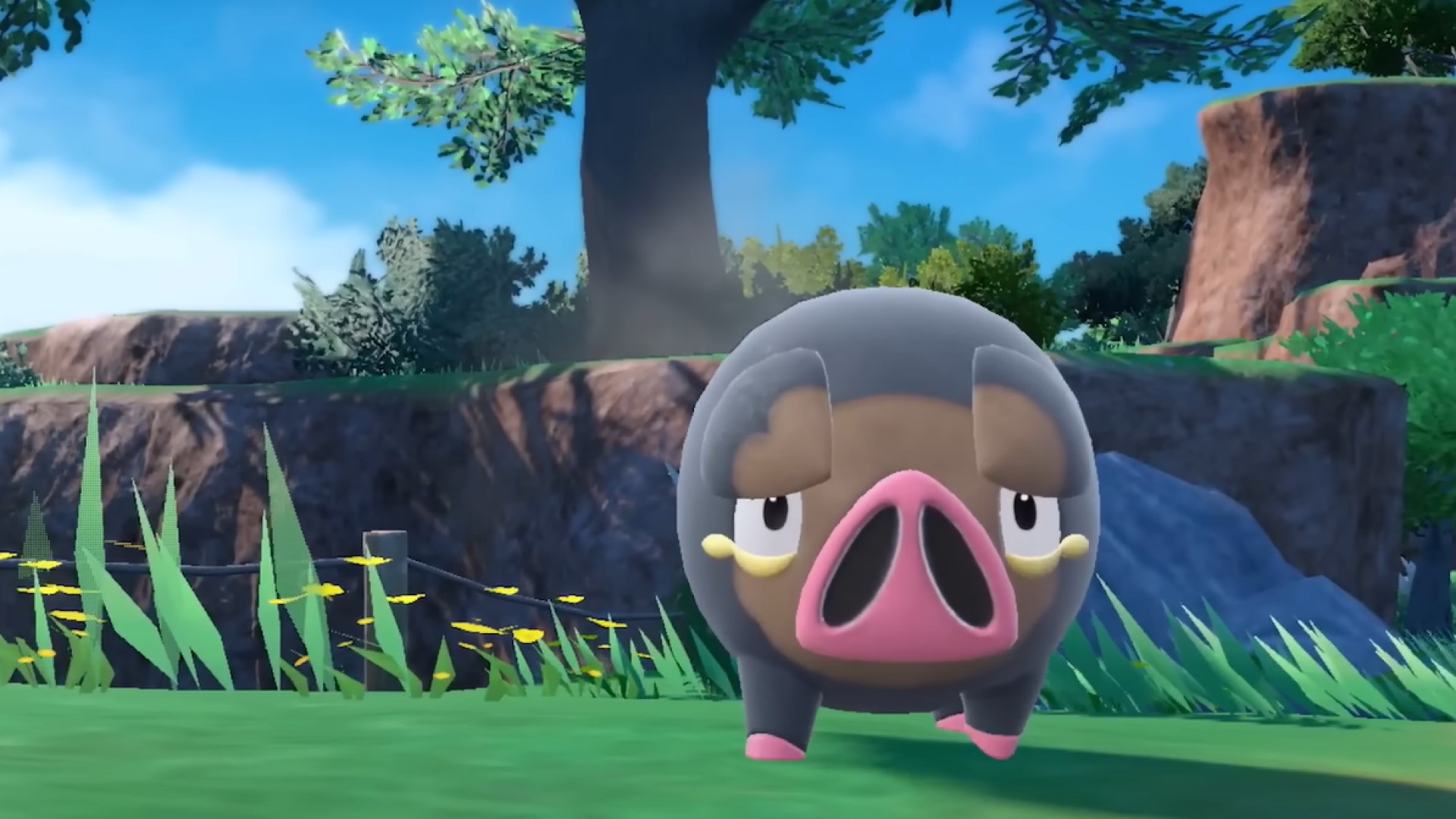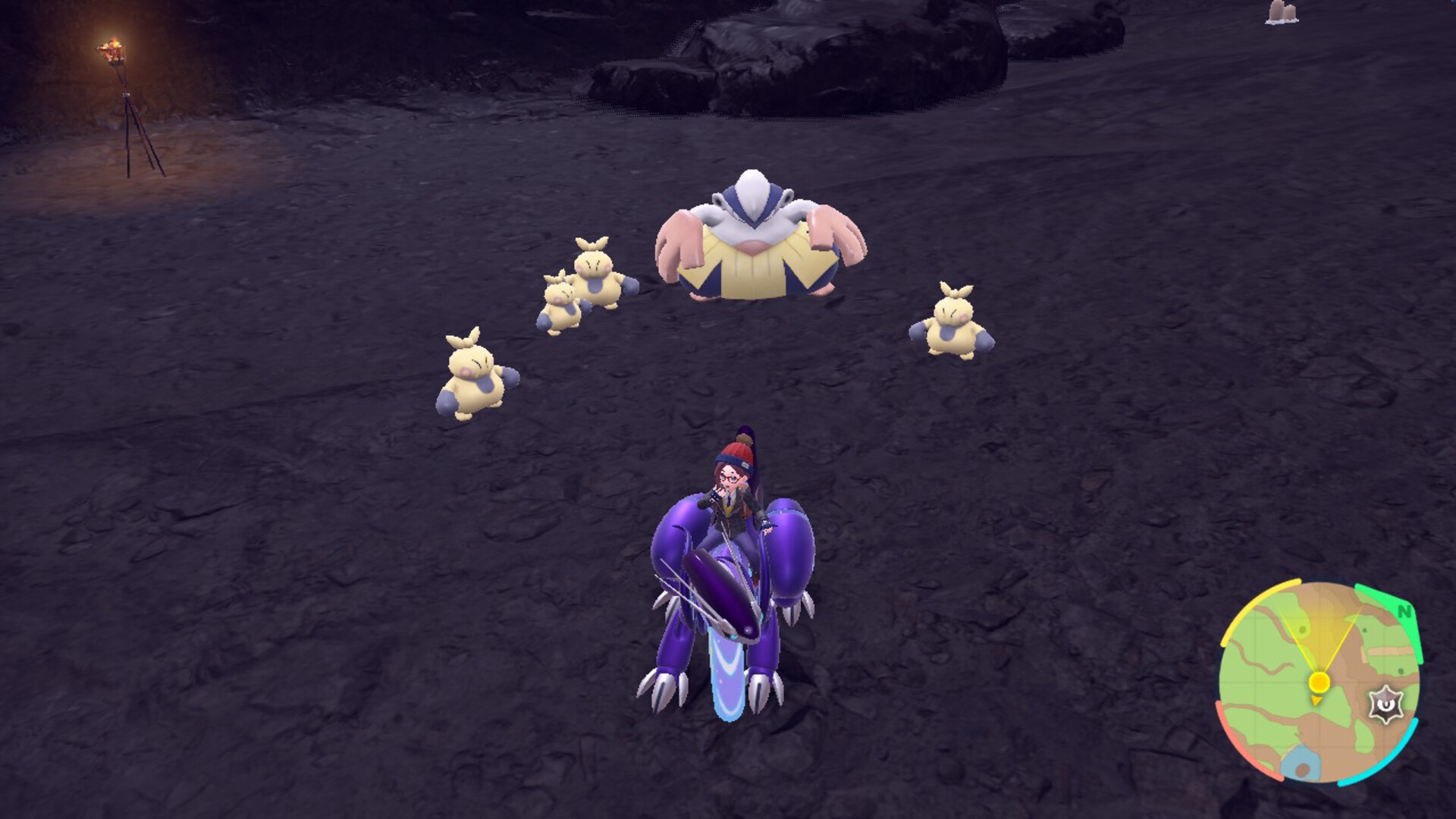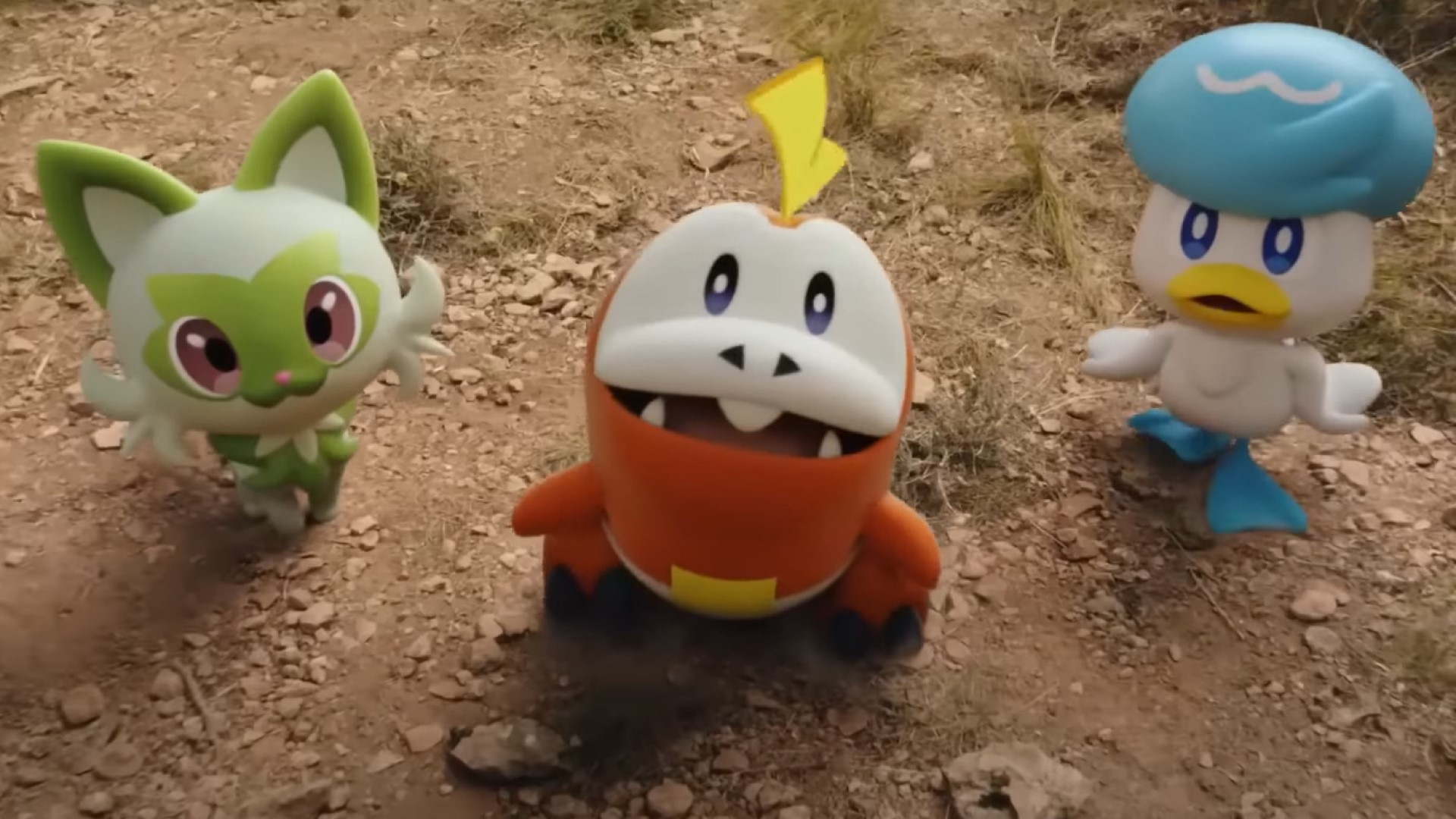According to a scientist, this is the best new Pokémon in Scarlet and Violet
Weird science

Despite enjoying a lot of my time with Pokémon Scarlet and Violet, I’ve found myself overwhelmed by the sheer number of new Pokémon any prospective trainer must contend with. From Flamigo to Pawmi, there are well over 100 new pocket monsters in Game Freak’s latest title, taking the total number of critters up to well over 1,000. That’s a lot of imaginary animals.
In times of crisis, we must turn to the experts. As such, I reached out to a qualified biologist and lifelong Pokémon fan with a Ph.D. in animal morphology. Wishing to remain anonymous for fear that their answers might be too shocking for the Pokémon audience at large, ‘Doctor X’ (as I’ll call them) was willing to sit down with me for a very scientific interview.
They had a lot more to say about the designs of the new Pokémon as a whole, offering their tips as to what makes a good design and expounding on exactly why it is that Pokémon made from inanimate objects are so very upsetting. And, true to their word, they confirmed, once and for all, the objectively best Pokémon in Scarlet and Violet. So, sit back, relax and get ready for science.
A Pig's Ear

According to science, the best new Pokémon in Scarlet and Violet is Oinkologne. For those of you who aren’t familiar, Oinkologne is the evolution of the porcine Lechonk. As well as being some sort of adorable pig, Oinkalogne embodies one of the best qualities a Pokémon can have. The best Pokémon are grounded in things that are “reflected in nature”, according to Doctor X. Pokémon are, for want of a better turn of phrase, better than real-life animals, but also build on the qualities that make animals great.
Oinkologne is not only a distinctive and singular improvement on pigs in the real world, but it also offers distinctive and memorable departures from porcine orthodoxy whilst remaining visually grounded.
Doctor X reminisced that when they were “a student still doing Paleontology” there was “a big article on the BBC” complaining that “children could recognize more Pokémon than British species of animal”. This is because Pokémon builds on the “visually distinctive” nature of real-world animals, creating creatures that are “easy to spot”.
This is where Oinkolonge comes in.
Oinkologne is not only a distinctive and singular improvement on pigs in the real world, but it also offers distinctive and memorable departures from porcine orthodoxy whilst remaining visually grounded. What’s more, Oinkolonge comes in two different flavors depending on its gender, but, unlike the majority of Pokémon, exhibits strong “sexual dimorphism”.
Get daily insight, inspiration and deals in your inbox
Sign up for breaking news, reviews, opinion, top tech deals, and more.
“The females are much lighter in color whereas, with the males, you’ve got a much stronger color,” the good Doctor tells me. What’s key for the doctor, however, is that, in the game, they’re not “classified as separate species” like with the female and male Nidoran in the original Pokémon Red and Blue. Instead, it is simply accepted that Pokémon come in different shapes and sizes as part of a wide, internally consistent fictional ecology.
Animal Kingdom

No amount of lofty scientific qualifications could keep Doctor X from being “entirely distracted by little crowds of Pokémon” as they “displayed herding behavior.” “Pokémon as open world is the best idea”, they continue. “It is fantastic to be able to just look at them running around in their environment and doing things.”
Even in the “early game”, Scarlet and Violet’s world is populated by “mid-evolution Pokémon surrounded by a little halo of first stage Pokémon”. Oinkolonge and Lechonk are no exception to this rule. By rooting the actions of its Pokémon in real-life animal behavior, developer Game Freak has added something truly novel to the franchise, offering us a brand new layer of immersion.
The most “interesting thing” about the more modern Pokémon games “is regional forms,” X continues. Regional forms also mirror reality, grounding Pokémon’s ecology in a real-world biological context. In real life, you get “really weird stuff” on islands and other “geographically isolated” areas. In Scarlet and Violet, this causes us to get regional variations on existing Pokémon. Wiglett mirrors the traditional Diglett, while Toadscools mirror the Tentacools of old.
However, Doctor X was keen to impress upon me that Pokémon Sun and Moon delivered far more interesting pocket monster permutations than Scarlet and Violet. While some were taken aback by the extremely long neck of Exeggutor’s Alolan form, X reminds us that “island dwarfism”, as well as “gigantism”, are an evolutionary quirk in self-contained, isolated ecologies. X was impressed by the bolder, more biologically grounded designs of Sun and Moon than by the more conservative efforts in Sword and Shield or Scarlet and Violet.
Diminishing Returns

Indeed, X has been, for the most part, unimpressed with modern Pokémon design. “More recent Pokémon aren’t as coherent or interesting as some much older generations,” says X. “I think they’ve run out of ideas.” It was, after all, bug collecting that inspired Satoshi Tajiri to create Pokémon in the first place. Commitment to a sort of pseudo-naturalism helped make “the original [Pokémon]… amazingly visually distinctive”.
“There’s only so many ways that you can invent a small cutesy animal,” continues X. Like many Pokémon fans, the doctor is deeply skeptical of Pokémon based on inanimate objects for this exact reason. In the later editions “there’s been much more ‘let’s animate an ice cream cone’,” X laments. By moving toward inanimate objects, Game Freak has undermined the real-world pseudo-biological basis of Pokémon. Doctor X puts it well: “the less said about Kelfki the better”.
That said, this isn’t a new problem for Pokémon. Even though Voltorb, one of the original 150, is “conceptually fabulous”, the fact that it’s “trying to disguise itself as a Pokéball” is “questionable”. In reality, “most animals don’t want to be randomly picked up by a human and run off with” so it seems “counterproductive” in terms of evolution.
While Scarlet and Violet has done a great deal to realize a Pokémon ecology, Doctor X’s analysis raises an important question as to whether or not inventing new pocket monsters is really the best bet for Game Freak. Perhaps it would be better for them to devote more time to giving the existing critters a little more love.

An editor and freelance journalist, Cat Bussell has been writing about video games for more than four years and, frankly, she’s developed a taste for it. As seen on TechRadar, Technopedia, The Gamer, Wargamer, and SUPERJUMP, Cat’s reviews, features, and guides are lovingly curated for your reading pleasure.
A Cambridge graduate, recovering bartender, and Cloud Strife enjoyer, Cat’s foremost mission is to bring you the best coverage she can, whether that’s through helpful guides, even-handed reviews, or thought-provoking features. She’s interviewed indie darlings, triple-A greats, and legendary voice actors, all to help you get closer to the action. When she’s not writing, Cat can be found sticking her neck into a fresh RPG or running yet another Dungeons & Dragons game.